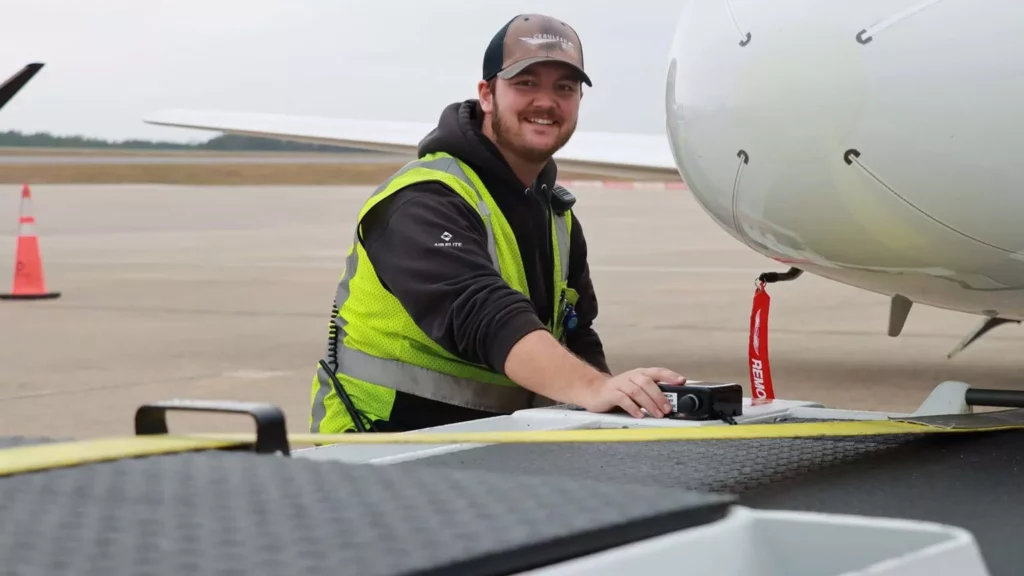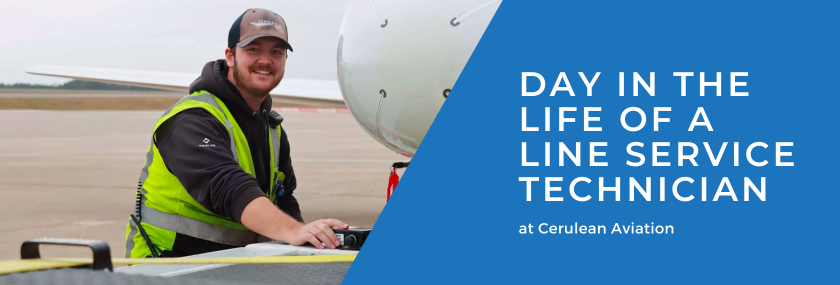Day in the Life: Line Service Technician – GSP
By Rick Spruill
* This article was originally featured in the Greenville Journal on March 2, 2023.
When he isn’t working, Chad Buckingham — line service technician lead with Cerulean General Aviation at Greenville-Spartanburg Airport — spends his free time in the skies above Greenville as a certified private pilot. But in his day job, Buckingham plays a key role in ensuring every aircraft coming into GSP is properly serviced and everyone’s baggage gets where it needs to be. He supports all ground operations for inbound and outbound aircraft, flight crews, and passengers, meaning his job is vital to keeping things moving, both on the ground and above.
How does a typical workday begin for a line service technician?
As a line service technician working second shift, my days begin at 2 p.m.
Typically, at that time there are transient aircraft and local aircraft getting fuel, ground electrical power to the aircraft, lavatory service, refill of potable water and other services that we provide so that they can continue on their busy flight schedules. After that, I work to prepare the morning shift for their day by positioning the overnight airplanes where they are easy to access in order of which is leaving first or leaving last.

What is the most rewarding aspect of working as a line service technician?
The most rewarding aspect of working as a line service technician is the engagement with local community members as well as visitors coming to the Greenville-Spartanburg area.
How many aircraft do you handle daily, on average?
The average varies by the time of year. During our busiest months the average would be around 35-40 aircraft a day while during the slow months the average is around 20-30 aircraft.
Are there any specific certifications or educational requirements to work as a line service technician?
Being a line service technician is an entry-level position, although once hired, all line service technicians go through NATA’s (National Air Transportation Association) Safety First online training certification.


